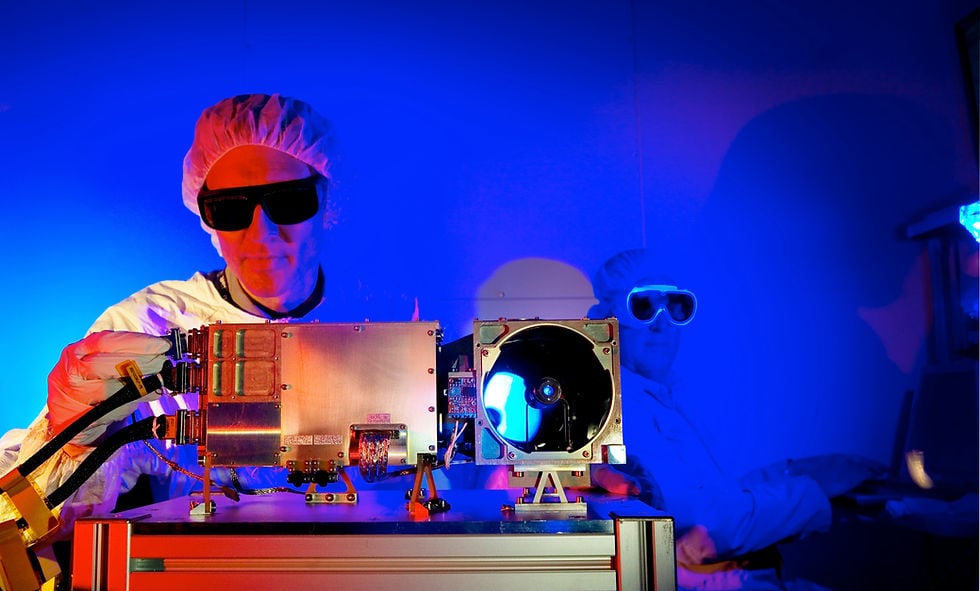Share this
Returning to the Lab: 5 Tips for a Positive and Productive Experience
September 10, 2020

In some areas of the country, research labs are beginning to reopen after months of closure due to the COVID-19 pandemic. If you’ve been called back to work, you may find yourself feeling anxious, disoriented, and overwhelmed. Clear, frequent communication helps to relieve anxiety, so preparing and distributing a transition plan can help alleviate stress for you and your team. Follow these five tips to boost confidence and productivity as you adjust to the new normal.
1. Reconnect with People
It’s more important than ever to prioritize the needs of team members. Create an open and positive environment by listening, over-communicating, remaining flexible, and being available. Visit the National Safety Council for more tips on managing employee stress.
Designate time to reconvene both as a group and individually in a way you can that ensures comfort and safety. Include those who are still working remotely.
Try picking up the phone instead of relying on email or better yet, video chat when possible. Follow up with peers whose papers and emails you reviewed.
2. Reorient Yourself with SOPs, PPE, and Safety and Quality Regulations
Chances are that your lab must adhere to new safety and regulatory policies. Revisit existing standard operating procedures, review the new policies, and understand exactly what has changed. Check the CDC guidelines for the latest lab safety practices.
Train your team on new procedures. Conduct a dry run of cleaning and disinfection protocols and proper use of PPE. For example, is testing required to return to the workplace? Are there contact tracing procedures in place?
Continue updating employees about guidance, safety precautions, and what the organization is doing to ensure safety.
3. Revisit Project Schedules and Budgets
If you haven’t done so already, revisit your existing projects’ goals, budgets, and schedules. Gain a thorough understanding of what changed, what remains the same.
Take note of new projects that have come in, some of which may have tight deadlines. Communicate across channels to get ahead of scheduling conflicts. Does your team have the resources they need to meet deadlines? Set internal deadlines if needed to break the work into smaller chunks.
Catch up on personnel changes, lab capacity, and changes to budgets and funding so you’re prepared to lead your team through this time.
Check the updated status of grant applications and funding requests.
Gather feedback from your team on what’s working and what’s not. Take a fresh look at workflows at your next lab meeting. Can virtual meetings replace some in-person meetings?
4. Reorganize Your Bench and Your Calendar
An organized lab bench is key for research projects to run smoothly, especially if your team is working at an increased pace. Check on equipment, storage spaces, inventory, and replace stock items.
Check to see if technical conferences have gone virtual or been rescheduled and update your calendar accordingly. If you submitted an abstract, follow up with conference organizers as there may be an opportunity to do a webinar or virtual event.
Perhaps you spent time developing lab requirements for a new project, or you read about the latest research that has applications in your everyday work. Plan the best time to get new initiatives off the ground.
5. Recalibrate Your Instruments
Even high-quality instruments can drift over time and degrade their ability to provide accurate measurements. Calibrate your instruments
Verify it still falls within specs
Go over the entire unit to ensure proper operation
Upgrade firmware and hardware to the most current version
Share this
- photonics (19)
- Lasers (12)
- DPSS Lasers (10)
- pulse delay generator (8)
- pulse generator (8)
- LIDAR (4)
- Lasers and Optics (4)
- Technology (4)
- Laboratory Science (3)
- Nd:YAG Lasers (3)
- PIV (3)
- Science (3)
- Spectroscopy (3)
- custom laser systems (3)
- Aerospace studies (2)
- Commercial Lasers (2)
- LIBS (2)
- Laser Induced Breakdown Spectroscopy (2)
- Laser Research (2)
- Laser Science (2)
- Particle Image Velocimetry (2)
- Pulsed Lasers (2)
- custom lasers (2)
- laser ablation (2)
- laser system (2)
- Biotech (1)
- COVID (1)
- Cancer (1)
- Cancer Diagnostics (1)
- Cancer Research (1)
- Current Generators (1)
- Dentistry (1)
- Emerald Pulse Generator (1)
- Flame Kernel (1)
- High Current Pulse Generator (1)
- Ignition and Combustion (1)
- Ignition flame kernel (1)
- Laser Dentistry (1)
- Laser Manufacturing (1)
- Laser Soldering (1)
- Laser Tooth (1)
- Laser aerospace (1)
- Laser photonics (1)
- MDA (1)
- Mass Spectroscopy (1)
- Micro Soldering (1)
- PIV Laser (1)
- Physics (1)
- Research (1)
- Surface mounted technology (1)
- ablation (1)
- artemis nasa (1)
- blue lasers (1)
- delay generator (1)
- er marketing (1)
- laser attenuator (1)
- laser modules (1)
- laser quality (1)
- laser sales and marketing (1)
- laser synchronizer (1)
- lasers for botanical safety (1)
- lasers for cannabis (1)
- lasers purity (1)
- lasers space (1)
- lunar mission 2021 (1)
- lunar missions (1)
- nasa lasers (1)
- nasa payload (1)
- oem lasers (1)
- photonics sales and marketing (1)
- system synchronizer (1)
- February 2024 (1)
- October 2023 (1)
- December 2022 (1)
- November 2022 (2)
- July 2022 (1)
- May 2022 (1)
- March 2022 (1)
- January 2022 (1)
- December 2021 (2)
- November 2021 (2)
- September 2021 (1)
- August 2021 (1)
- July 2021 (2)
- June 2021 (1)
- May 2021 (2)
- April 2021 (1)
- March 2021 (3)
- February 2021 (1)
- January 2021 (2)
- December 2020 (1)
- November 2020 (2)
- October 2020 (2)
- September 2020 (4)
- August 2020 (3)
- July 2020 (3)
- June 2020 (4)
- May 2020 (2)
- April 2020 (6)
- March 2020 (3)
- February 2020 (3)
- December 2019 (2)
- November 2019 (3)
- October 2019 (2)
- September 2019 (1)
- August 2019 (2)
- May 2019 (1)
- April 2019 (1)
- February 2019 (1)
- October 2018 (2)
- September 2018 (2)
- August 2018 (2)
- July 2018 (1)
- June 2018 (1)
- April 2018 (1)
- March 2018 (1)
- February 2018 (1)
- January 2018 (1)
- December 2017 (2)
- September 2017 (3)
- July 2017 (2)
- June 2017 (2)
- March 2017 (4)
- January 2017 (2)
- November 2016 (2)
- September 2016 (2)
- August 2016 (1)
- May 2016 (1)
- April 2016 (1)
- March 2016 (2)
- December 2015 (2)
- October 2015 (2)
- September 2015 (1)

